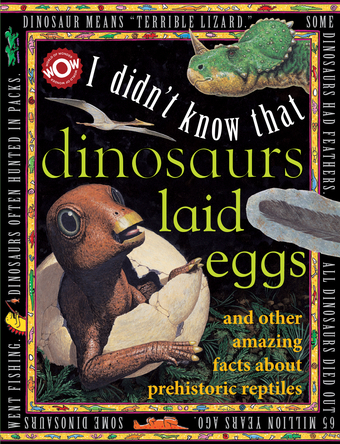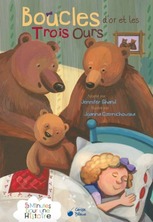Extrait du livre I Didn't Know That Dinosaurs Laid Eggs
Get ready to hear your kids say, “Wow! I didn’t know that!” as they dive into this fun, informative, question-answering series of books! Students—and teachers and parents—will learn things about the world around them that they never knew before! This approach to education seeks to promote an interest in learning by answering questions kids have always wondered about. When books answer questions that kids already want to know the answers to, kids love to read those books, fostering a love for reading and learning, the true keys to lifelong education. Colorful graphics are labeled and explained to connect with visual learners, while in-depth explanations of each subject will connect with those who prefer reading or listening as their learning style. This educational series makes learning fun through many levels of interaction. The in-depth information combined with fantastic illustrations promote learning and retention, while question and answer boxes reinforce the subject matter to promote higher order thinking. Teachers and parents love this series because it engages young people, sparking an interest and desire in learning. It doesn’t feel like work to learn about a new subject with books this interactive and interesting. This set of books will be an addition to your home or classroom library that everyone will enjoy. And, before you know it, you, too, will be saying, “Wow! I didn’t know that!” “People cannot learn by having information pressed into their brains. Knowledge has to be sucked into the brain, not pushed in. First, one must create a state of mind that craves knowledge, interest, and wonder. You can teach only by creating an urge to know.” - Victor Weisskopf
Did you know that some dinosaurs had feathers? That some could fly? That there were real sea monsters in dinosaur times? Discover for yourself amazing facts about prehistoric life, how big the animals were, what they ate, how their babies were born, and how we know all this. Watch for this symbol, which means there is a fun project for you to try. True or False? Watch for this symbol and try to answer the question before reading on for the answer.
! Paleontologist Mary Anning found her first fossil at 13 years old. I didn't know that all dinosaurs died out 65 million years ago. For 150 million years, Earth was a planet inhabited by dinosaurs—until disaster struck. Maybe a meteorite hit the Earth, or maybe a large number of volcanoes erupted, but the dinosaurs were no more. We know about dinosaurs because people have discovered their fossilized remains in rocks. Fossil specialists, or paleontologists, can piece fossils together and figure out how the dinosaurs lived. True or False? Humans were responsible for making the dinosaurs extinct. Answer: False Humans and dinosaurs never lived together on Earth. Over One Million Years B.C.—films 60 million years separate the last that got it wrong! dinosaurs and our earliest ancestors. Saltasaurus Dinosaur history is divided into three periods: Triassic (early), Jurassic (middle), and Cretaceous (late). Different dinosaurs lived in different periods. Coelophysis Stegosaurus Triassic Jurassic Tyrannosaurus Cretaceous ! Crocodiles have barely changed at all since dinosaur times.
! The Chinese discovered dinosaur bones in the third century A.D. I didn't know that dinosaur means “terrible lizard.” By 1841, people realized that these enormous fossilized bones belonged to huge extinct reptiles, not giant humans! Scientist Dr. Richard Owen named them “dino” (terrible) “saurs” (lizards). One of the differences between dinosaurs and other reptile families, such as crocodiles or lizards, is that dinosaurs walked on straight legs. A dinosaur’s skin would have been very tough and scaly to the touch. Like a snake’s skin, which people sometimes expect to be slimy, it would have felt dry and bumpy. Thirty-nine feet (almost 12 meters) tall with a three-foot (almost one meter) wide mouth, and teeth as long as carving knives, Tyrannosaurus rex was a nightmare lizard! Its name means “King Tyrant Lizard.” Close-up of T. rex’s skin T. r ex ’ s fo s s ilized t o o t h ! The first dinosaur discovered in the West was found in 1824.



























